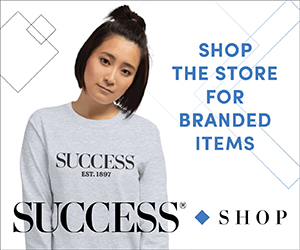If Nora Ephron’s romantic comedies were set in the late 2010s, she might have written a meet-cute that looked a lot like Jen Gottlieb and Chris Winfield’s.
Gottlieb moved to New York City to study musical theater. She’d landed a role in the Broadway national tour of The Wedding Singer and then spent years hosting a VH1 show called That Metal Show—no matter that she wasn’t exactly a fan of heavy metal music.
“Before I knew it, five years had gone by, and I had built this brand up as somebody that was a total lie,” she says. “I was pretending to be somebody that I wasn’t for this show that I had. I really lost myself in that era of my life.”
Winfield, meanwhile, found himself in Manhattan after taking a job at a tech startup. He was raised in a small town, and all he knew was that he didn’t want to work in the local school district like everyone else in his family.
“I was not one of those people who started doing a lemonade stand when I was 6 years old and knew I was gonna be a Gary Vee or something like that,” he chuckles.
When it turned out the tech company was kind of corrupt, Winfield started his own web design company and focused on marketing. He knew he didn’t want to rely on anyone else for work again, and he thought he could get people to come to him through SEO and the right marketing message. Soon, he was doing media and speaking about his work in front of crowds.
From acting to entrepreneurship
By 2017, Gottlieb had left the acting world behind to become a personal trainer, learning in the process that she had a knack for entrepreneurship and a love for running her own business. (In the Ephron-directed version of this story, imagine their lives unfolding on a split screen—he puts on a lavalier microphone to address an assembled audience; she dons a headset mic to teach a fitness class).
But something was missing. Gottlieb had a sense that she was alone and that the isolation was holding her back in her career.
Exhausted and searching for meaning, she decided on her word of the year: connection. That’s when she met Winfield—who’s also known as the “Super Connector.”
“We went out on a walk in Central Park, and that walk ended up being an all-day excursion. And that was it,” she smiles. “I think we knew in that moment.”
Eventually, Winfield popped the question: “What would it take for you to drop your fitness business and be my partner and create Super Connector Media with me?”
Gottlieb said yes.

Creating a lasting impact
Both members of this power couple know how to market themselves authentically—how to create a brand that resonates—and they spent years at Super Connector Media helping other entrepreneurs and businesses do the same. Today, though, a lot of their focus is on events and education—specifically regarding AI technology.
Now, maybe “authentic brand building” and “artificial intelligence” seem at odds to you. They don’t have to be! What’s important to remember, Gottlieb and Winfield explain, is that AI is a tool. It’s a way to help clarify and hone your messaging, to tell your story in a powerful way. And if you feel like it’s overwhelming or too much to apply to your brand, they want to help you get out of your head about it.
“There’s this idea that everyone is so far ahead of us, you know?” Winfield says. “We teach people all the time: It’s still very early in this. I think sometimes people let that feeling of being behind keep them from doing more.”
“I think all the work we’ve been doing with it thus far has just been showing us all the amazing opportunities to do good with this technology,” Gottlieb adds. “For creators out there to start to expand and just play with it a little bit, you’ll start to see…the more you play with it, the more confident you become in the fact that it can actually help you.”
Using AI for business
One way Gottlieb regularly uses AI technology is to turn one single piece of content into dozens of pieces of content.
“I feel like some of the biggest excuses that entrepreneurs have when they’re not creating consistent content is, ‘I don’t have the time, I don’t know what to say, I can’t come up with a good idea, and I’m just stuck. I don’t even know what to write, and then by the time I figure it out I don’t have time to post. There’s not enough content,'” Gottlieb says.
Let’s say she’s doing a long-form podcast interview. That’s a lot of time to spend on one piece of media—except it won’t just be one piece of media. Gottlieb will use AI tools to transcribe the conversation and then use additional tools to chop up that transcription and make lots of little captions. She can take the text and create Instagram posts or LinkedIn posts or email copy. She might make a course out of it. Or she’ll use AI video editing tools like ContentFries to turn a single long video into dozens of shorter clips, which she’ll share across social media.
“Whereas before, one long-form podcast interview would just be one long-form podcast interview, this podcast interview is going to be shorts, it’s going to be videos, it’s going to be posts, it’s going to be emails, it could be a course,” Gottlieb says. “It could be so many things, and it could be that very, very quickly.”
Winfield’s AI recommendations
AI chatbots might be among the most well-known tools of this kind, and Winfield recommends a trinity of them: ChatGPT, Google’s Gemini and Claude.ai.
“I use them to create at least two pieces of content every day,” he says. “What it does is it basically takes my writing, which is pretty good, and it makes it as if I worked with someone who’s really good.”
His strategy on using AI for business is to run his copy through all three chatbots to see which one does the best. It may not be a matter of taking everything from one bot, but rather choosing here and there—one really good line from Gemini, one unforgettable sentence from Claude—to make the best version of his writing possible.
Utilizing AI as a tool not a crutch
When it comes to writing, Gottlieb doesn’t recommend having the chatbots spit out copy for you. Instead, she likes to use the tools as a writing partner.
“I’ll have AI ideate with me; I’ll do a creative session with AI,” she explains. “I’ll say, ‘Hey, I’m trying to think of a great post to write right now, and I’ve hired you as an expert social media marketer to help me write it. You ready?'”
She and the chatbot will go back and forth on what she wants to discuss and the message she wants her audience to receive. From there, she “Jen-ifies” the copy: “I add my voice, my spice. It’s almost like having a co-creator with you so you don’t have to do it alone.”
This is what she tells her audience—when it comes to brand-building, having AI with you is a confidence-boosting tool. It lets her post and create more, it helps her reach more people and it helps expand her audience. It removes barriers and jumps through hoops for you. “It’s like having the best assistant ever,” she says.
And it doesn’t stop with writing: “For anything basically that we can think of, I probably have a tool that I use for it,” Winfield says. There’s a tool called Trainual for developing AI-powered SOPs, employee training and onboarding. Another tool, GoHighLevel, has “basically replaced everything,” from creating websites and making landing pages to writing surveys to communicating with customers. Another site, Perplexity, is like an AI-based search engine, creating a beautiful web page for each search term from high-quality sources, in seconds. “If anyone ever was going to beat Google, it would be this,” Winfield chuckles.
Why having a strong personal brand matters
Both Gottlieb and Winfield believe that as we move into this new AI-powered future, having a well-developed personal brand is actually going to be more important than ever before.
“Here’s the thing to think about: It’s not going to be OK to not have a personal brand,” Winfield explains. “There are a lot of jobs, positions, industries where, right now, it’s fine to not have a personal brand.”
Copying someone’s voice or their avatar can be done right now with AI tools. In a year or two, though, it will be even easier, Winfield notes. That means owning your narrative and having a recognizable brand will be more important, not less.
“There’s not gonna be any more Johnson and Johnson or 3M or anything where you have no idea who it is, what it is,” Winfield says. “The companies that are coming up—people know who’s behind them. There’s a good story.”
This article originally appeared in the July 2024 issue of SUCCESS+ Magazine. Photo courtesy of Chris Eckert










